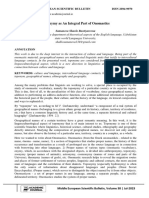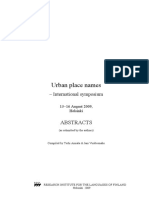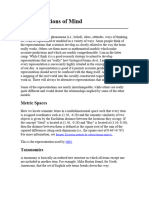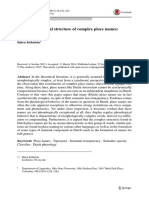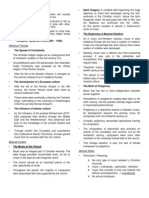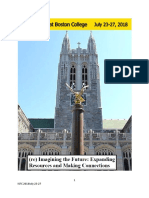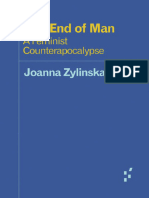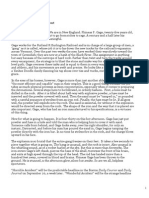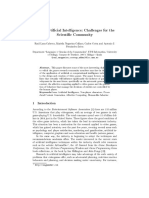0% found this document useful (0 votes)
18 views11 pages18 Cognitive Approaches To Hungarian Toponymy
This document discusses applying cognitive approaches to studying Hungarian toponyms. It reviews how cognitive theories have been used in Hungarian onomastic research, including theories of categorization, prototypes, and cognitive semantics. Cognitive approaches provide new perspectives for analyzing issues like how toponyms are grammatically categorized and how to create typologies of toponym categories.
Uploaded by
Oq YaCopyright
© © All Rights Reserved
We take content rights seriously. If you suspect this is your content, claim it here.
Available Formats
Download as PDF, TXT or read online on Scribd
0% found this document useful (0 votes)
18 views11 pages18 Cognitive Approaches To Hungarian Toponymy
This document discusses applying cognitive approaches to studying Hungarian toponyms. It reviews how cognitive theories have been used in Hungarian onomastic research, including theories of categorization, prototypes, and cognitive semantics. Cognitive approaches provide new perspectives for analyzing issues like how toponyms are grammatically categorized and how to create typologies of toponym categories.
Uploaded by
Oq YaCopyright
© © All Rights Reserved
We take content rights seriously. If you suspect this is your content, claim it here.
Available Formats
Download as PDF, TXT or read online on Scribd
/ 11





